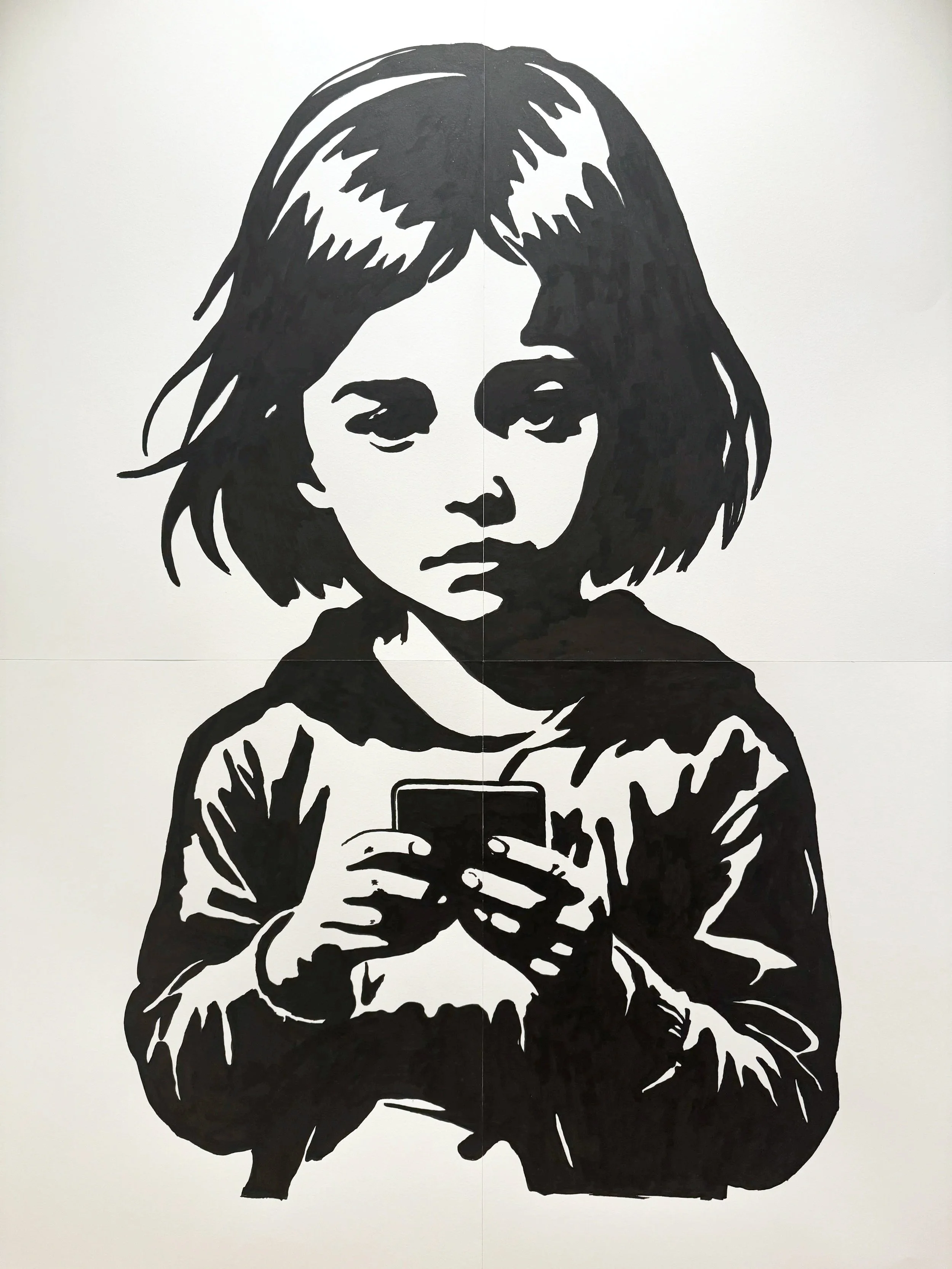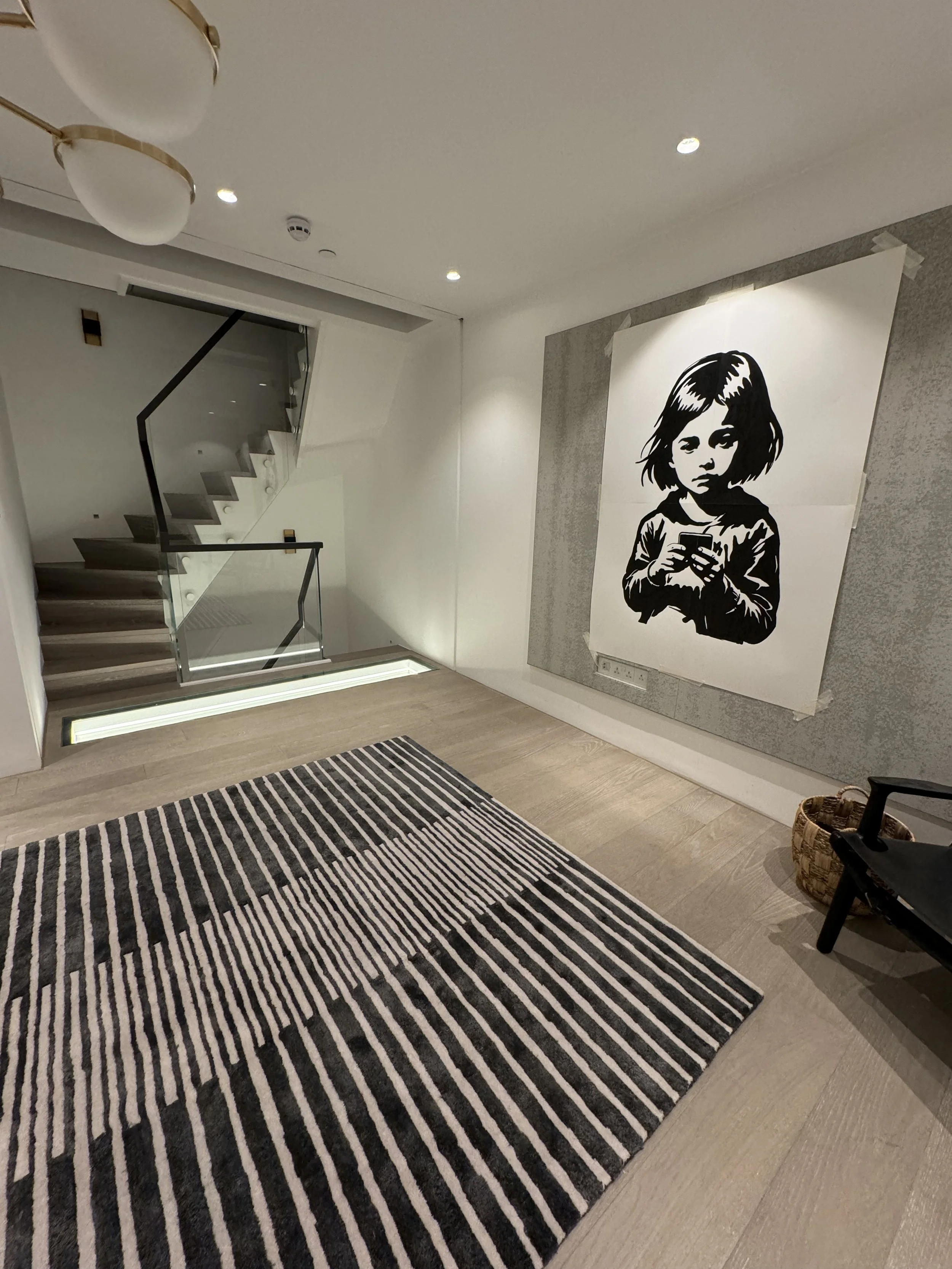Else
Acrylic based ink on paper
Executed 3rd July 2024, London
Else remains one of the most haunting and resolved moments in my artistic journey. When I began this piece, I wanted to explore the threshold between presence and disappearance, the fragile space where the body is here, yet the mind has drifted somewhere else. The image shows a young girl, drawn in inky chiaroscuro against the stark whiteness of the paper. Her hands cradle a small device, and for the first time in my practice, her eyes are purposely uncovered, meeting the viewer directly. That vacant gaze, still, distant, and immeasurably quiet, carries an unease that words cannot reach. She is here, yet she is gone.
The title Else came to me naturally. In English, it means “other,” “different,” or “beyond,” and in this work it becomes a kind of question: where is she? Somewhere else? Who is she? Somebody else? It encapsulates the displacement I wanted to portray: a psychological exile that feels increasingly common in this generation raised under the algorithmic spell of the screen. The girl in Else is not a villain, nor a victim; she is an apparition, a presence dissolved by the very device that “connects” her. Her stillness is deceptive, born not from calm but from saturation, a stillness of someone overwhelmed, whose interior noise has become constant enough to erase the self.
The material construction of the work is as important as its image. I created it by joining four sheets of paper, a technique I had explored in the Preliminary Study for Swing of Silence. That fragile assembly became a metaphor for the subject itself. The seams are visible, imperfect, and deliberate; they hold the child together, yet they also suggest how easily she could come apart. What appears whole is precarious. Those lines that run through the paper became, for me, a kind of moral architecture, speaking of the fractures we no longer see, of identities pieced together for appearance’s sake while something deeper quietly disintegrates beneath.
Formally, Else refines my graphic language to its most distilled state. Heavy blacks articulate form without indulgence, while light becomes absence rather than illumination, the space where meaning has been drained away. Every contour here is intentional, shaped by both presence and erasure. The girl’s face, reduced to its essentials, holds the weight of classical portraiture but with a distinctly contemporary grief, the quiet tragedy of the digital age.
Leaving her eyes uncovered was a decision that marked a turning point for me. In my earlier works, the eyes of the children were veiled with colour, symbols of blindness, of awareness stolen by the screen. Here, I removed that veil not to free her, but to reveal a deeper captivity. Her gaze meets ours, but behind it lies a void. She has seen too much, absorbed too much; the act of seeing itself has become impossible. The look she returns is not accusatory, it is distant, unguarded, and profoundly human.
When I look at Else now, I see it as a mirror of everything I have been trying to say through my art. It represents the moment I shifted from observing to documenting, from witnessing the effects of technology to giving them form. It distils my mission into a single, silent confrontation: to expose the psychological cost of our dependence on screens, not through anger or moralising, but through empathy and reflection.
For me, Else is not only about this girl; it is about all of us. It asks what remains of presence when attention has been outsourced, what becomes of identity when consciousness lives elsewhere. I don’t see it as a moral lesson, but as a mirror, one that shows a generation both illuminated and lost in its own glow.



